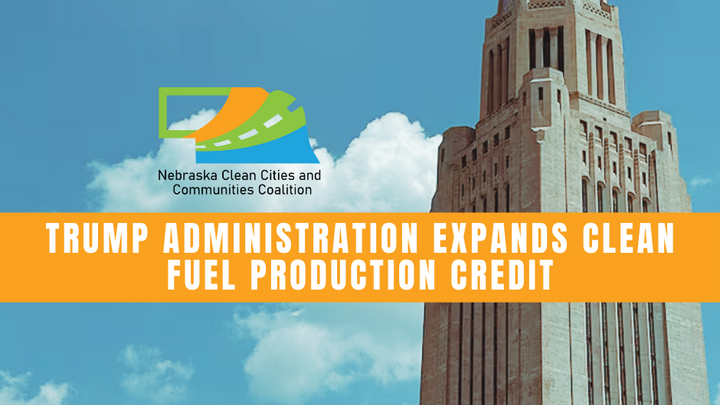The Clean Fuel Production Credit (CFPC) (Section 45Z/IRS Notice 2025-11 is a federal incentive designed to reward U.S. producers of low- and zero-emission transportation fuels. It has been strengthened and expanded under Trump’s One Big Beautiful Bill.
Created by the Inflation Reduction Act of 2022, the CFPC took effect on Jan. 1, 2025, and replaces multiple expired fuel incentives. Originally set to expire in 2027, the law has been extended through the end of 2029, and is designed as a technology-neutral credit, rewarding any transportation fuel that meets strict lifecycle greenhouse gas (GHG) limits.
Additionally, producers who earn the CFPC can sell or transfer the credit to others instead of using it solely to offset their own taxes. Indirect land-use change (ILUC) penalties for corn ethanol have been removed; now, only direct emissions from growing, processing, and transporting corn (plus fuel use) count toward its GHG score. This lowers the calculated emissions for corn ethanol, making it easier for producers to qualify for the CFPC or to receive a higher credit amount.
Who Qualifies:
- U.S.-based fuel producers (not blenders or compressors) registered with the IRS
- Fuels with lifecycle emissions CO₂ equivalent per 1 million British Thermal Units (mmBTU), according to the Department of Energy’s 45CF-GREET model. Aviation fuel producers may use the 45ZCF-GREET model, the Carbon Offsetting and Reduction Scheme for International Aviation (COARSIA) Default or Actual model.
- Fuel must be suitable for use in highway vehicles or aircraft (some marine fuels may qualify if they meet this test).
Qualifying fuel types include:
- Biodiesel
- Ethanol
- Hydrogen
- Naphtha
- Propane
- Renewable Diesel
- Renewable Natural Gas
- Sustainable Aviation Fuel
Producers of fuel types not listed may petition the Secretary of Treasury for a Provisional Emissions Rate (PER) determination. To do this, producers need to compile detailed data on the fuel’s feedstocks, production process, energy use, and transportation, then calculate its lifecycle greenhouse gas emissions using the approved emissions models. Submit this analysis, along with supporting documentation, in a formal petition to the Treasury. If approved, you’ll receive a temporary, official emissions score that lets you claim the credit while your fuel awaits permanent inclusion in the IRS’s emissions table.
The IRS and Treasury are expected to publish detailed procedural guidance soon on how to submit PER petitions (e.g., required forms, deadlines, and submission format). Until then, the petition process remains unavailable, meaning that neither the IRS will accept submissions nor will the DOE issue PER values.
How It Works:
The IRS will use DOE’s 45Z-GREET model to determine lifecycle emissions rates. Producers using feedstocks grown with Climate Smart Agriculture (CSA) (like sorghum, soybeans, or corn) may earn a lower emissions score — and a bigger advantage. Feedstocks must be sourced from the U.S., Canada, or Mexico.
Credit Amount:
The credit value varies depending on whether the fuel is sustainable aviation fuel (SAF) or non-SAF and whether wage and apprenticeship requirements are met. The base credit is $0.20 per gallon for non-aviation fuels and $0.35 per gallon for SAF produced before 2026, dropping to $0.20 for SAF produced after that. Meeting prevailing wage and apprenticeship requirements increases these amounts by five times, potentially reaching up to $1.00 per gallon for non-aviation fuels and up to $1.75 for SAF produced before 2026. The final credit amount is also determined by an emissions factor based on the fuel’s lifecycle GHG emissions rate, with lower emissions resulting in a higher factor.
If you have questions or want to learn how your organization can maximize benefits from the updated CFPC, please reach out to the Nebraska Clean Cities & Communities Coalition at nec4@unl.edu. We can provide guidance on eligibility, assist with the petition process for new fuel types, and offer support navigating the latest regulatory updates.



